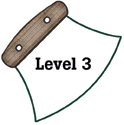
Alaska Science
Key Element C2
A student who meets the content standard should understand that scientific knowledge is validated by repeated specific experiments that conclude in similar results.
 |
Alaska Science A student who meets the content standard should understand that scientific knowledge is validated by repeated specific experiments that conclude in similar results. |
|
Performance Standard Level 3, Ages 11–14
|
|
|
|
Sample Assessment Ideas
|
Standards Cross-References
|
||
|
National Science Education Standards Communicate scientific procedures and explanations. With practice, students should become competent at communicating experimental methods, following instructions, describing observations, summarizing the results of other groups, and telling other students about investigations and explanations. (Page 148) Science advances through legitimate skepticism. Asking questions and querying other scientists’ explanations is part of scientific inquiry. Scientists evaluate the explanations proposed by other scientists by examining evidence, comparing evidence, identifying faulty reasoning, pointing out statements that go beyond evidence, and suggesting alternative explanations for the same observations. (Page 148) Scientific investigations sometimes result in new ideas and phenomena for study, generate new methods on procedures for an investigation, or develop new technologies to improve the collection of data. All of these results can lead to new investigations. (Page 148) |
Benchmarks Know why it is important in science to keep honest, clear, and accurate records. (Page 287) When similar investigations give different results, the scientific challenge is to judge whether the differences are trivial or significant, and it takes often further studies to decide. Even with similar results, scientists may wait until an investigation has been repeated many times before accepting the results as correct. (Page 7) Accurate record-keeping, openness, and replication are essential for maintaining an investigator’s credibility with other scientists and society. (Page 18) |
|
Table of Contents | Return to Alaska Native Knowledge Network